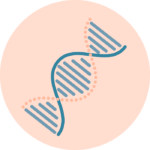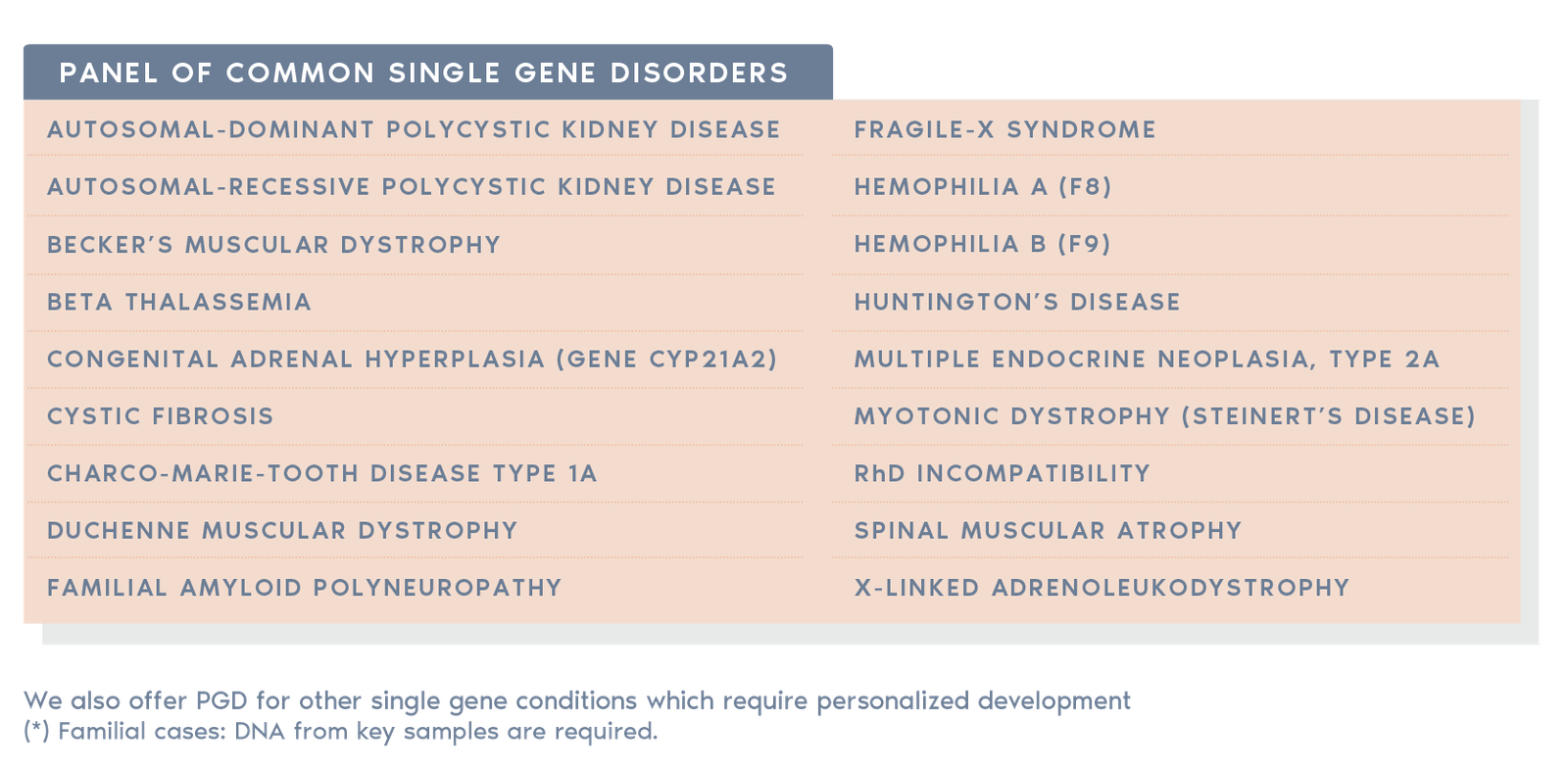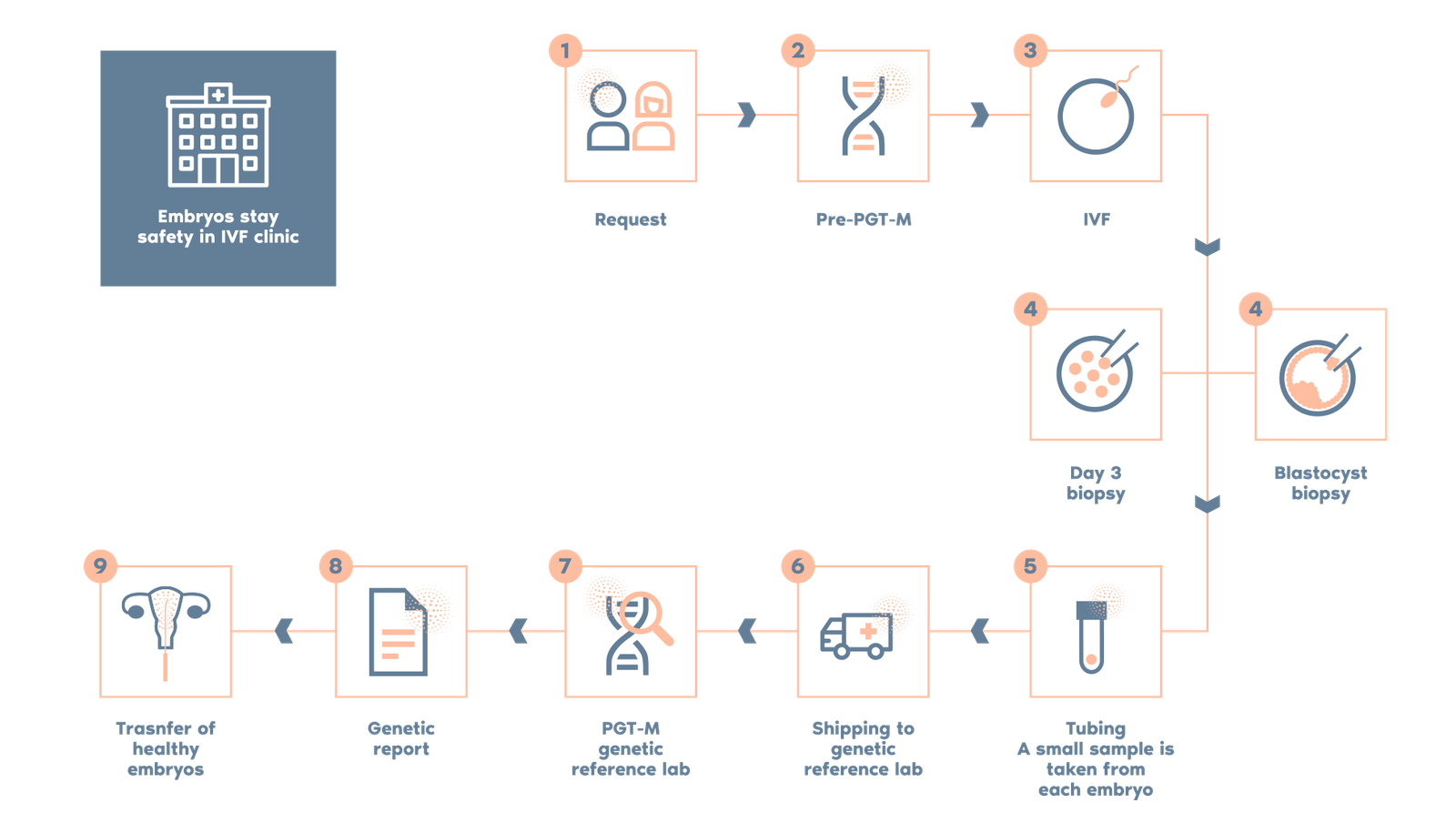labneticspakistan.com
Llabnetics Pakistan
PGT-M Preimplantation Genetic Testing for Monogenic disorders
Prevent the transmission of single gene disorders to future children and achieve a healthy pregnancy

Igenomix has performed more than 1300 PGT-M cycles

Options for combined
PGT-M+PGT-A

Our PGT-M testing is 98% accurate.
What is PGT-M test?
> PGT-M (formerly PGD) is an early genetic diagnosis test for embryos produced during IVF, prior to their transfer to the uterus.
> By analysing DNA from each embryo, normal embryos can be preferentially selected to be transferred and begin the journey towards conceiving a healthy child.
What is the procedure?
Why should use PGT-M test?
> PGT-M is indicated for couples with personal or familial high-risk for single gene conditions including Cystic Fibrosis, Fragile-X syndrome, Muscular dystrophy,
> Huntington’s disease, and others.
Who should use PGT-M test?
> Patients who are undergoing an assisted reproduction treatment and have a personal or familial high-risk for single gene conditions. This risk may be identified due to:
> A family history of these conditions
> A positive carrier screening result

Test Limitations
> Limitations of PGT-M can arise from the IVF treatment itself. For example, poor ovarian stimulation can reduce the likelihood of identifying a healthy embryo, since PGT-M success is linked to the number of high-quality eggs and embryos produced in the cycle.
> PGT-M can be performed only if the disease-causing mutation or mutations have been identified, it cannot be performed if the genetic cause is unknown.
> PGT-M provides no guarantee of a completely healthy baby. If a couple is at high risk of transmitting a particular disease to their offspring, PGT-M significantly minimizes this risk. However, there remains a small risk of misdiagnosis due to technical limitations, such as contamination, recombination and ADO. Couples should always be offered the possibility of prenatal diagnosis to confirm results. It is important to know that PGT-M will test for the specific mutation requested, but no other genes or mutations are analyzed, even if they are located within the same gene.
> The test does not guarantee the complete health of the baby.
- A previous affected child
